clock This article was published more than 1 year ago

The historical novel ‘Horse’ sheds light on real-life racism
Pulitzer winner Geraldine Brooks’s latest book is a sweeping tale that uses the true story of a famous 19th-century racehorse to explore the roots and legacy of enslavement
In 2019, a PhD student in art history rescues an oil painting of a racehorse from a pile of discarded stuff on a Georgetown sidewalk, and a zoologist finds a skeleton marked “Horse” in a Smithsonian attic. In 1850, an enslaved boy is present at the birth of a foal. These are the ingredients with which Geraldine Brooks begins her new novel, “Horse,” and, goodness, they are just as beguiling as her fluid, masterful storytelling.
From the beginning, the weave of the narrative is clear: It’s no surprise that the horse in the painting is the same animal whose bones are collecting dust in the Smithsonian and the same again as the newborn foal who will find a devoted, lifelong companion in the boy, Jarret. The horse’s name is Lexington, and he was a real-life racehorse who won six of his seven starts and became a legendary thoroughbred sire whose offspring dominated American racing in the late 19th century. Brooks includes other figures from history: Lexington’s various owners; Thomas J. Scott, a Pennsylvania-born animal painter who served in the Union Army during the Civil War; and the modernist art dealer Martha Jackson. But Brooks’s central characters — Jarret; the art historian Theo; and the zoologist Jess — are invented.
Geraldine Brooks reimagines King David’s life in ‘The Secret Chord’
Jarret is the child of Harry Lewis, a horse trainer who was able to buy his own freedom in antebellum Kentucky. Harry’s employer, Dr. Elisha Warfield, offers to give the colt Lexington to Harry in lieu of a year’s wages so that Harry, if he makes the horse a success, might earn enough to purchase his son. This bargain proves too good to be true. Once Lexington wins his first race, Harry’s ownership gives covetous White horsemen the necessary leverage to take the animal from him. It turns out there is a law forbidding Black people from running horses, and so Dr. Warfield is blackmailed into selling both Lexington and Jarret. The young man and the horse are sent south, eventually to the massive racing operation of Richard Ten Broeck in Louisiana. Of course, the abhorrent and absurd truth is that both Lexington and Jarret are considered livestock, resources to be exploited until they die. Ten Broeck recognizes the value of Jarret’s skill with horses and deep rapport with Lexington and, in what could be mistaken for generosity but is actually just canny exploitation, elevates him to the status of deputy trainer, a promotion that gives Jarret responsibility without true authority.
A century and a half later, Theo and Jess are brought together by Lexington’s remnants: his portrait, his bones. Theo, who is Black, is the child of diplomats, a Nigerian mother and an American father. He grew up in British boarding schools and was a polo star at Oxford before the indignities of racism — from which privilege could not insulate him — drove him from the sport. His interest in the horse portrait is casual at first, then sharpens as he homes in on the presence of Black men in similar works from the era — grooms and trainers — likely to have been enslaved. Jess is White, Australian and an odd duck, fascinated since childhood with the bones of living things. The two begin a tentative relationship, their mutual attraction existing uneasily alongside Jess’s tendency toward oblivious microaggression and Theo’s doubts that she is capable of fully understanding his experience as a Black man.
The 23 most unforgettable last sentences in fiction
Jarret’s story is one of individualism. His dogged betterment of himself and his tenacious devotion to Lexington serve as a private rebellion against the erasure that is slavery. Ultimately the war determines his fate, but unpredictably so. Theo and Jess are also at the mercy of their time, but progress is a complicated proposition. The resolution of their story is saturated with the same rot of injustice that was introduced to this country with slavery and has flourished ever since. In “Horse,” Brooks, who is a meticulous researcher and whose previous novels, including “ People of the Book ” “ Caleb’s Crossing ” and the Pulitzer Prize-winning “ March ,” have all been concerned with the past, writes about our present in such a way that the tangled roots of history, just beneath the story, are both subtle and undeniable.
The feeling that pervades is that the more things change, the more they stay the same. Horses were cruelly used and discarded by the antebellum horse-racing industry; the same is true of modern racing. Enslaved men were regarded as inherently dangerous and were murdered without consequence according to White whims; police officers kill Black men with impunity still today. The artist Thomas J. Scott, initially sympathetic toward Confederate prisoners, eventually gives up talking to them because they were “lost to a narrative untethered to anything he recognized as true. Their mad conception of Mr. Lincoln as some kind of cloven-hoofed devil’s scion, their complete disregard — denial — of the humanity of the enslaved, their fabulous notions of what evils the Federal government intended for them should their cause fail — all of it was ingrained so deep, beyond the reach of reasonable dialogue or evidence.” If that doesn’t sound familiar, you haven’t been on the internet lately.
Maggie Shipstead’s ‘Great Circle’ is a soaring work of historical fiction and a perfect summer novel
I raced through the novel’s first half and then slowed and slowed as I went on, so worried for what might happen to Jarret and Theo and to Lexington that I could hardly bear to find out. “Horse” is not a grim book, but it did sometimes make me very angry, and it did make me cry. “Horse” is a reminder of the simple, primal power an author can summon by creating characters readers care about and telling a story about them — the same power that so terrifies the people so desperately trying to get Toni Morrison banned from their children’s reading lists.
Maggie Shipstead is the author of “Seating Arrangements,” “Astonish Me,” “Great Circle” and “You Have a Friend in 10A.”
By Geraldine Brooks
Viking. 416 pp. $28
We are a participant in the Amazon Services LLC Associates Program, an affiliate advertising program designed to provide a means for us to earn fees by linking to Amazon.com and affiliated sites.


Geraldine Brooks
401 pages, Hardcover
First published June 14, 2022
About the author

Ratings & Reviews
What do you think? Rate this book Write a Review
Friends & Following
Community reviews.

Join the discussion
Can't find what you're looking for.
Advertisement
Supported by
In ‘Horse,’ Geraldine Brooks Sets a Consideration of Race at the Track
Brooks’s latest novel focuses on two young Black men, and shuttles between the present day and the 19th-century world of horse racing.
- Share full article

By Alexandra Jacobs
HORSE By Geraldine Brooks 401 pages. Viking. $28.
The title of Geraldine Brooks’s new novel, “Horse,” alludes to Lexington: the real and extraordinary late-19th-century Kentucky bay stallion who drives its plot. The subtext, if not the subtitle, is “Race.” Not for the contests Lexington won, though those are recreated in detail suitable for both the sports and society pages, but for the book’s confrontation of relations between Black and white people over the course of two centuries.
Valuable legacies can disappear, is the underlying message — for years, this celebrity thoroughbred’s skeleton languished at the Smithsonian, shoved in an attic and marked only equus caballus — even as barbaric ones linger.
A wide-ranging practitioner of historical fiction and adventuresome journalism, Brooks has visited the rocky terrain of race before. Her novel “March” (2005) explored the life of the mostly absent father from Louisa May Alcott’s “Little Women,” a chaplain for the Union Army during the Civil War. In The New York Times, Brooks’s similarly accomplished contemporary, Thomas Mallon (a white man), criticized her (a white woman), for populating that book with a number of “slave saints and savants” in supporting roles, calling the result “treacly and embarrassing.” Others disagreed , and “March” went on to win a Pulitzer Prize.
This time, after novels about Judaism , the first Native American to graduate from Harvard and the biblical King David , Brooks focuses on two young Black men, giving them richly layered backgrounds and complicated inner lives (in an afterword, she thanks among others her son Bizu, whom she and her late husband, the author Tony Horwitz , adopted from Ethiopia, for insight into the modern Black experience).
The book opens with Theo, a Ph.D. candidate in art history at Georgetown who pulls a painting of Lexington out of a hostile neighbor’s trash in 2019. In short order, the action zooms back to 1850 and Jarret, a skilled groom whose enslaved father had bought his own freedom but couldn’t afford his son’s.
The character of Jarret was inspired by a fleeting reference in an old issue of Harper’s Magazine, informed by Brooks’s research on enslaved horse trainers, who had — tenuously — more authority and status on the turf than their counterparts in the fields. His progress through the novel is propelled by disquieting transfers of ownership: he comes of age as “Warfield’s Jarret”; is both empowered and imperiled as “Ten Broeck’s Jarret”; and so on, through emancipation. Tenderly devoted to the prize horse first known as Darley, he also tangles warily with Cassius Marcellus Clay, the hotheaded, philandering abolitionist and one of Clay’s daughters, Mary Barr. Mary always seems to be creeping up on Jarret in an organza frock: well-meaning, with an interest that comes to verge on the romantic, but putting him at risk by her very presence.
Part of Brooks’s project, developed in the wake of George Floyd’s murder, is to show that Theo, despite 21st-century autonomy and a privileged background — he’s the son of diplomats, attended Yale and Oxford and has what a friend calls a “Lord Fauntleroy accent” — can never really relax because of his skin color. (To which some readers may respond: “Duh?”) His former polo teammates called him Caca, Sooty and worse. His neighbor flinches when he tries to help her with a shopping cart — “just a White woman, White-womaning,” he thinks, tamping down his anger. And he first meets his new love interest, Jess, when she thinks he’s stealing her expensive bike. Noticing (speaking of treacle) that Theo’s eyes are “the color and luster of maple syrup,” Jess then castigates herself for “what had been no microaggression but blatant racism.”
Their affair, which starts fumblingly and then takes a hard, melodramatic turn, feels like something of a skeleton mount, merely a place where their professional lives can intersect. Here, Brooks has done considerable homework, and deserves, by my lights, a top grade. Jess manages an osteology prep lab without squeam, cleaning animal carcasses with dermestid beetles; and recovers Lexington from the natural history museum’s attic. Theo is inspired to pursue a new dissertation topic after salvaging the equestrian painting, by a minor equestrian artist named Thomas J. Scott (who also intermittently seizes the narrative and embarks, in Brooks’s imagining, on an interracial gay affair in New Orleans).
Brooks’s chronological and cross-disciplinary leaps are thrilling, and mostly seamless, though there can be a lot of exposition in the dialogue. With the all-access passport granted by historical fiction, she even alights daringly, if perhaps a little superfluously, in the circle of Jackson Pollock, right before the artist died while driving drunk with his mistress.
But this is really a book about the power and pain of words, not pictures: the wrong ones Jess says, fearing insensitivity; the “blinking cursor, tapping like an impatient finger” that Theo and all writers face; the archaic ones Brooks summons for verisimilitude, like “jimberjawed” and “clerestory”; the ones Jarret dare not speak. “Words could be snares,” he thinks. “Less of them you laid out there, less likely they could trap you up.” (Or as Aaron Burr put it in “Hamilton”: “Talk less. Smile more.”) And the ones beloved beasts cannot speak.
Call it a prolonged case of post-“Watership Down” stress disorder, but most books with animal themes make me want to run like hell; chances are the creatures are going to suffer or die at the hands of abusers or predators. In “Horse,” though, Lexington is ennobled by art and science, and roars back from obscurity to achieve the high status of metaphor. It’s us human beings who continue to struggle.
Alexandra Jacobs is a book critic and the author of “Still Here: The Madcap, Nervy, Singular Life of Elaine Stritch.” More about Alexandra Jacobs
Explore More in Books
Want to know about the best books to read and the latest news start here..
As book bans have surged in Florida, the novelist Lauren Groff has opened a bookstore called The Lynx, a hub for author readings, book club gatherings and workshops , where banned titles are prominently displayed.
Eighteen books were recognized as winners or finalists for the Pulitzer Prize, in the categories of history, memoir, poetry, general nonfiction, fiction and biography, which had two winners. Here’s a full list of the winners .
Montreal is a city as appealing for its beauty as for its shadows. Here, t he novelist Mona Awad recommends books that are “both dreamy and uncompromising.”
The complicated, generous life of Paul Auster, who died on April 30 , yielded a body of work of staggering scope and variety .
Each week, top authors and critics join the Book Review’s podcast to talk about the latest news in the literary world. Listen here .
- International edition
- Australia edition
- Europe edition

Horse by Geraldine Brooks review – a confident novel of racing and race
The Australian-American author gallops through the life of a famed racehorse in the antebellum south but falters when she reaches modern America
I n a museum laboratory, a young osteologist – a scholar of bones – reassembles the skeleton of a 19th-century racehorse. The animal has spent decades fixed too haughtily upright; a prim parody of a thoroughbred. Rewired, he may run again, if only in the imaginations of those who stare at his bare, beautiful frame.
In her sixth novel, Horse, Geraldine Brooks attempts the same feat on the page – setting loose a history-bound stallion. Her subject is the famed Kentucky thoroughbred Lexington, king of the antebellum racetrack. “A horse so fast that the mass-produced stopwatch was manufactured so his fans could clock times in races that regularly drew more than twenty thousand spectators,” Brooks marvels. “A horse so handsome, that the best equestrian artists vied to paint him.” Lexington was famously virile, too, the greatest sire of his age; the father of dynasties and battle steeds.
But underneath the romance lies a dark inevitability: antebellum horseracing was an industry of white prestige built on the plundered labour of Black horsemen. “As I began to research Lexington’s life, it became clear to me that this novel could not merely be about a racehorse,” Brooks explains in her afterword. “It would also need to be about race.” It’s the kind of solemn and virtuous statement that can make a reader wary; that unmistakable whiff of good intentions.
In green-pastured Kentucky in the early 1850s, an itinerant artist – a painter of rich men’s horses – is struck by the beauty of a white-socked foal, and captures the animal on canvas. Watching him paint is Jarret, an enslaved groom who will tend to the horse until its dying breath. It is the last defiant decade of US slavery, and the boy and the horse will be bought and sold together. “A racehorse is a mirror,” the painter tells Jarret, “and a man sees his own reflection there.”
More than 160 years later, an oil painting of a white-socked horse is dumped on the roadside in Washington DC. It’s salvaged by Theo, a graduate student with an equine fixation. The equestrian art of the antebellum south often includes Black stablemen, and Theo is writing his PhD on the dehumanising equivalences these paintings make between man and beast – the gilt-edged boast of ownership.
Horse moves between Lexington’s record-breaking life and his cultural afterlife; between Jarret’s world and Theo’s. Jarret is denied the dignity of his own name; Theo is the poshly educated son of diplomats; but both are living in policed Black bodies. Horse is a tale of America’s inescapable and ever-braided legacies: the mythic and the monstrous.
Brooks cut her journalistic teeth on the racing beat, and she knows her way around a horse. This book returns the Australian-American novelist to the terrain that won her a Pulitzer prize with March , her 2005 tale of the war-absent father from Little Women. She brings the same archival confidence and sensory flair to the antebellum racetrack. Jarret’s portion of Horse is exactly the novel you’d expect: bloodlines and broodmares; farriers and knackeries; wild gambles, wild gallops and plantation-era grotesqueries. A dollop of civil war valour. And at the centre of it all, love story: a boy and his horse.
It’s when Brooks resurfaces in the near-present that Horse falters. With his elaborate backstory, convenient thesis and issue-prodding love interest, Theo’s story feels machine-tooled. Raised outside the US, he’s as naive as he is worldly – a man on a collision course with American injustice.
But there’s more than didacticism at play, for Lexington’s history is full of serendipities. An original painting of the racehorse was indeed rescued from street garbage, and his skeleton was discovered lurking in the attic of the Smithsonian. It’s possible to connect the stallion to General Ulysses S Grant and to Jackson Pollock’s reckless death. Brooks cannot bear to leave these details out. Who could? And so Horse crowbars its characters into these cosmic accidents. Six degrees of equine.
But with tender precision, Horse shows us history in flux. As Theo researches his abandoned painting, he encounters the devoted boffins who work to enrich the story we tell of the past: archivists, curators, scientists. It’s here that our osteologist makes an appearance, with her lab of flesh-eating beetles and bleached bones. When a skeleton is hung well, she explains, the armature disappears: “A really good mount allow[s] a species to tell its own story.” A really good historical novel does the same thing, letting the past stretch out into a wild and beastly shape. Horse has strong bones – but the struts and wires are showing.
Horse by Geraldine Brooks is published by Hachette on 15 June in Australia ($39.99) and 16 June in the UK, and by PRH in the US
- Geraldine Brooks
- Australian book reviews
- Australian books
- Horse racing
Most viewed

- print archive
- digital archive
- book review
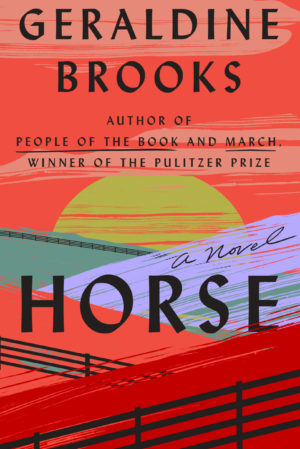
[types field='book-title'][/types] [types field='book-author'][/types]
Viking, 2022
Contributor Bio
Bailey sincox, more online by bailey sincox.
- Lucy by the Sea
- Our Country Friends
by Geraldine Brooks
Reviewed by bailey sincox.
“Historical fiction” may be one name for Geraldine Brooks’s craft, but that label doesn’t do her novels justice. Her Pulitzer Prize-winner, March (2005) , spotlights the taciturn father from Little Women. A transcendentalist compelled to enter the Union Army, he is a man of ideas struggling to become a man of action. People of the Book (2008) follows a Jewish manuscript from medieval Spain to modern Bosnia through exile, conflict, and genocide. Brooks’s novels don’t just use history as backdrop; they plumb the depths of the past in search of wisdom for the present.
Horse brings together the best parts of Brooks’s earlier work. It combines March ’s focus on the American Civil War with People of the Book ’s multiple narrators. Like March , Horse focuses on a character, while also centering on objects, like People of the Book .
The title refers to the label on a skeleton gathering dust in the Smithsonian’s attic. As it turns out, “Horse” is as much of a misnomer for Lexington, called “the greatest thoroughbred stud sire in racing history,” as “historical fiction” is for Horse. In Washington, D.C. in 2019, Jess, a zoologist, is called to restore Lexington’s newly-identified bones for public display. She collaborates with Theo, an art historian, who finds a painting of a horse in his neighbor’s garbage. This is the premise for Brooks’s latest transhistorical, when-worlds-collide plot.
Jess and Theo’s stories are interspersed with that of Jarret, Lexington’s groom, during the 1850s and 60s. Born into slavery in Kentucky, Jarret bonds with a colt called Lexington, setting out to prove that “all men are equal on the turf or under it” and hoping to win enough at the races to purchase his freedom. Lexington grows famous for his speed and endurance under Jarret’s care, but, by 1854, “the enmity is grown so great that even the turf provides no neutral ground.” Sold, along with Lexington, first to a New Orleans entrepreneur, then back to Kentucky, Jarret watches the Civil War unfold from the South’s elite stables. In 2019, Jess and Theo know nothing about Jarret. Nevertheless, they use the evidence they have to reconstruct his world.
In Horse, Brooks examines what others have overlooked. Like Horse ’s protagonists, she rummages through what looks like junk, searching for treasure. Jess rescues Lexington’s bones and “articulates” them; Theo salvages the painting to restore it. These objects carry traces of the past that need to be studied in order to be understood—and in order for their full stories to be told.
Part Da Vinci Code and part Nickel Boys, Horse draws readers into a historical mystery: what made Lexington so great? If he was so great, why was he forgotten? ( Seabiscuit gets a shoutout, too.) In its search for answers, the novel wavers between awe and indignation. While many of the novel’s characters are historical figures (abolitionist Cassius Clay, art dealer Martha Jackson, Lexington himself), Jarret is just a figure in a painting—the painting of Lexington “led by Black Jarret, his groom” recorded in an artist’s catalogue. A painting that’s now lost.
At the novel’s heart, then, is a more important question: how did we forget about Jarret? The bitter fact of knowing more about the horse than the man is not lost on Brooks. She elevates the history of Black grooms, trainers, and jockeys even as she underscores the disturbing interchangeability of the men with the horses they rode. When the New Orleans horse racing impresario Ten Broek says “this [ … ] is my Jarret. He knows the horse. Follow his advice in every particular, as if his instructions were my own,” Jarret “trie[s] to ignore the dissonant clanging of Ten Broeck’s words. My horse. My Jarret. New grandstands, new barns—did the man just buy up everything he wanted in this world?” This is Horse ’s strength: it depicts dignity and indignity at once. It asks readers to remember the passion and expertise Black men brought to the sport of horse racing and to recognize the violence that kept them out of its official record. As the novel shows, the horse whose legacy is preserved in museums, art galleries, and stud catalogues would not exist if not for the man whose life is irrecoverable except through fiction.
Horse may be better on the past than the present. The novel’s attempts to depict the Black Lives Matter movement and other current events can be clunky. But its spirit of humility and humanity prevails. Words directed at a collector buying Lexington’s painting may as well be directed at Brooks: “I guess you like horses.” Like her, Brooks responds: “It’s far more complicated than that.” Horse shows us just how complicated it is.
Published on September 6, 2022
Like what you've read? Share it!
- Member Login
- Library Patron Login
SUBSCRIBE TO OUR
FREE NEWSLETTERS
Search: Title Author Article Search String:
Reviews of Horse by Geraldine Brooks
Summary | Excerpt | Reading Guide | Reviews | Beyond the book | Read-Alikes | Genres & Themes | Author Bio
by Geraldine Brooks
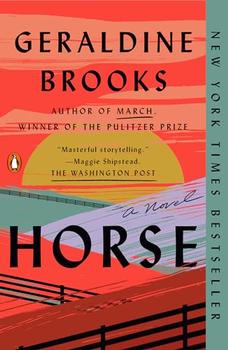
Critics' Opinion:
Readers' Opinion:
- Historical Fiction
- Washington DC
- Tenn. Va. W.Va. Ky.
- 19th Century
- Contemporary
- Books About Animals
- Top 20 Best Books of 2022
Rate this book
About this Book
- Reading Guide
Book Summary
Winner of the 2022 BookBrowse Fiction Award A discarded painting in a junk pile, a skeleton in an attic, and the greatest racehorse in American history: from these strands, a Pulitzer Prize winner braids a sweeping story of spirit, obsession, and injustice across American history.
Kentucky, 1850 . An enslaved groom named Jarret and a bay foal forge a bond of understanding that will carry the horse to record-setting victories across the South. When the nation erupts in civil war, an itinerant young artist who has made his name on paintings of the racehorse takes up arms for the Union. On a perilous night, he reunites with the stallion and his groom, very far from the glamor of any racetrack. New York City, 1954 . Martha Jackson, a gallery owner celebrated for taking risks on edgy contemporary painters, becomes obsessed with a nineteenth-century equestrian oil painting of mysterious provenance. Washington, DC, 2019 . Jess, a Smithsonian scientist from Australia, and Theo, a Nigerian-American art historian, find themselves unexpectedly connected through their shared interest in the horse—one studying the stallion's bones for clues to his power and endurance, the other uncovering the lost history of the unsung Black horsemen who were critical to his racing success. Based on the remarkable true story of the record-breaking thoroughbred Lexington, Horse is a novel of art and science, love and obsession, and our unfinished reckoning with racism.
THEO Georgetown, Washington, DC 2019
The deceptively reductive forms of the artist's work belie the density of meaning forged by a bifurcated existence. These glyphs and ideograms signal to us from the crossroads: freedom and slavery, White and Black, rural and urban. No. Nup. That wouldn't do. It reeked of PhD. This was meant to be read by normal people. Theo pressed the delete key and watched the letters march backward to oblivion. All that was left was the blinking cursor, tapping like an impatient finger. He sighed and looked away from its importuning. Through the window above his desk, he noticed that the elderly woman who lived in the shabby row house directly across the street was dragging a bench press to the curb. As the metal legs screeched across the pavement, Clancy raised a startled head and jumped up, putting his front paws on the desk beside Theo's laptop. His immense ears, like radar dishes, twitched toward the noise. Together, Theo and the dog ...
Please be aware that this discussion guide will contain spoilers!
- On page 28 (Theo, Georgetown, Washington, DC, 2019), Theo reflects that depictions of horses are among the oldest art humans created. The book's epigraphs reflect on the significance of Lexington—in his day, an even bigger celebrity than Seabiscuit or Secretariat. Discuss the enduring human fascination with horses—do they move you more than other animals, and if so, why?
- Theo and Jess are both obsessed with their rarefied fields of expertise. Does the author manage to convey why these unusual careers can be so compelling? If so, how?
- Jarret's connection with horses is presented as stronger than his bonds with people. How does his love for and dedication to Lexington help or hamper his coming of age and his transformation ...
- "Beyond the Book" articles
- Free books to read and review (US only)
- Find books by time period, setting & theme
- Read-alike suggestions by book and author
- Book club discussions
- and much more!
- Just $45 for 12 months or $15 for 3 months.
- More about membership!

BookBrowse Awards 2022
Media Reviews
Reader reviews, bookbrowse review.
Geraldine Brooks creates a powerful backstory for 19th-century thoroughbred racehorse Lexington, weaving a rich tapestry of historical and current-day narratives that aptly reflect how the legacy of slavery still ripples through America. The historic underpinnings of the work are as spellbinding as the characters. Whether Brooks is chronicling the history of thoroughbred racing, exploring the impact of the Civil War on African American jockeys, or detailing the nuances of American equestrian art, it is all equally engrossing... continued
Full Review (557 words) This review is available to non-members for a limited time. For full access, become a member today .
(Reviewed by Jane McCormack ).
Write your own review!
Beyond the Book
Black jockeys: the foundation of american horse racing.
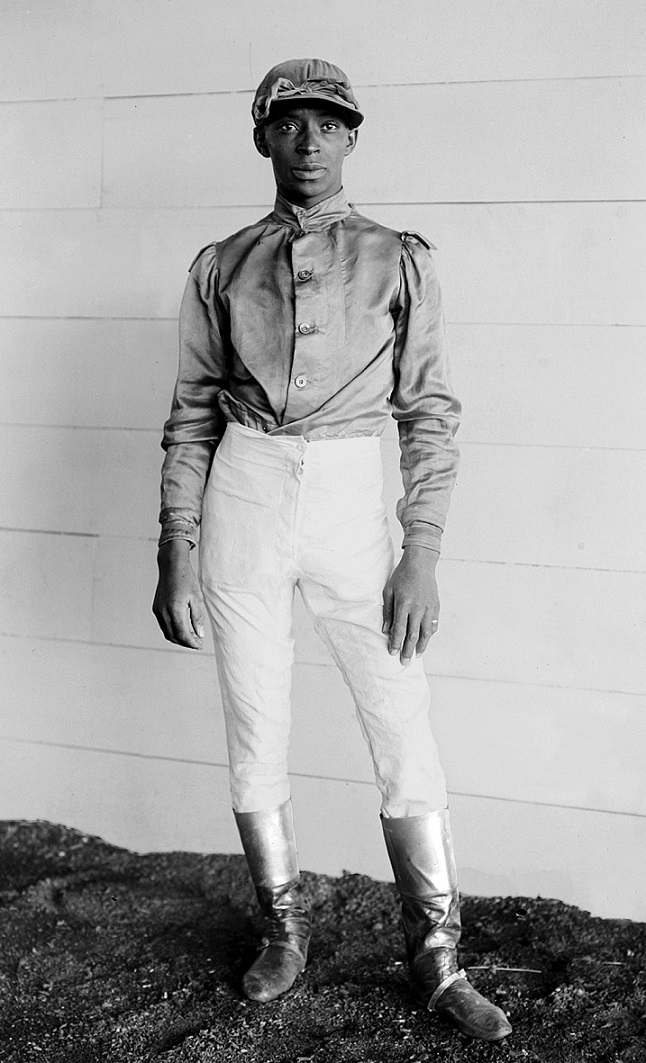
This "beyond the book" feature is available to non-members for a limited time. Join today for full access.
Read-Alikes
- Genres & Themes
If you liked Horse, try these:
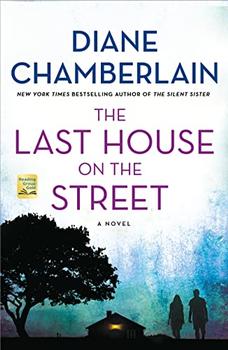
The Last House on the Street
by Diane Chamberlain
Published 2023
About this book
More by this author
A community's past sins rise to the surface in New York Times bestselling author Diane Chamberlain's The Last House on the Street when two women, a generation apart, find themselves bound by tragedy and an unsolved, decades-old mystery.
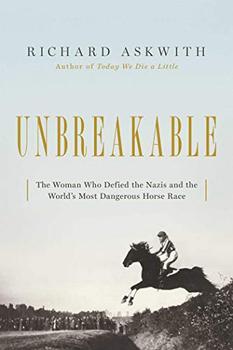
Unbreakable
by Richard Askwith
Published 2021
The courageous and heartbreaking story of a Czech countess who defied the Nazis in a legendary horse race.
Books with similar themes
Support bookbrowse.
Join our inner reading circle, go ad-free and get way more!
Find out more
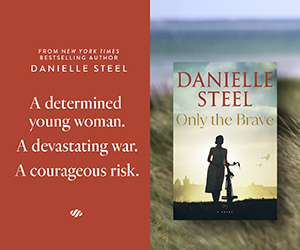
BookBrowse Book Club
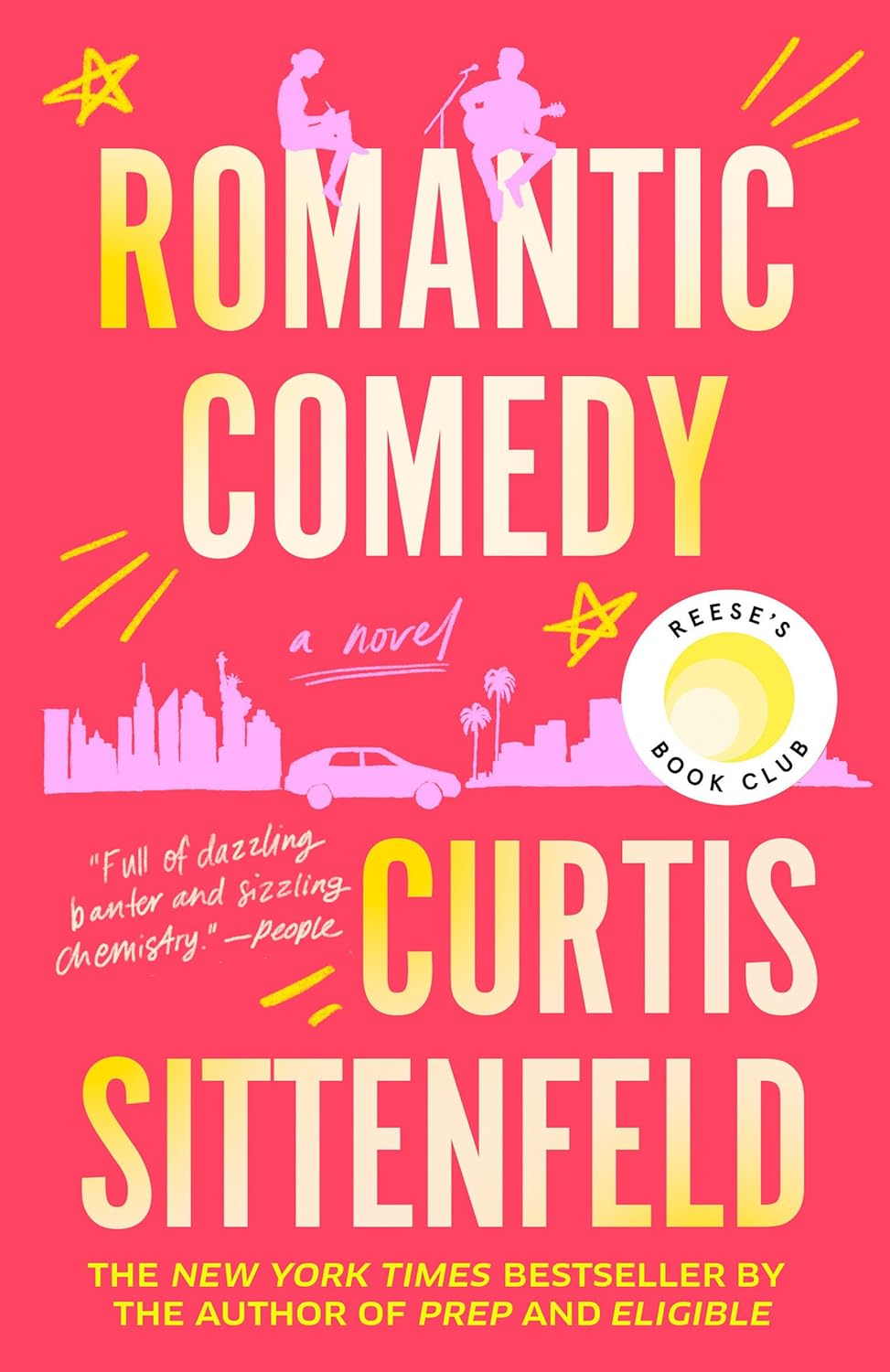
Members Recommend
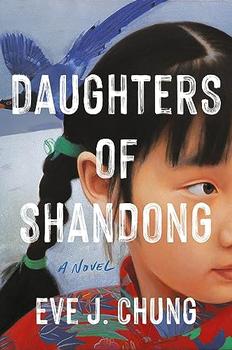
Daughters of Shandong by Eve J. Chung
Eve J. Chung's debut novel recounts a family's flight to Taiwan during China's Communist revolution.
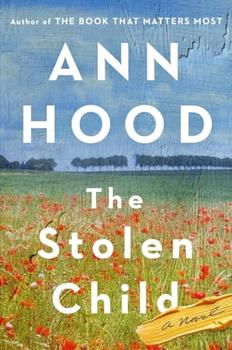
The Stolen Child by Ann Hood
An unlikely duo ventures through France and Italy to solve the mystery of a child’s fate.
Win This Book
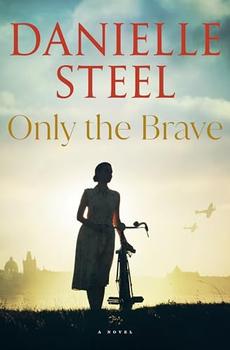
Only the Brave by Danielle Steel
A powerful, sweeping historical novel about a courageous woman in World War II Germany.
Solve this clue:
and be entered to win..
Your guide to exceptional books
BookBrowse seeks out and recommends the best in contemporary fiction and nonfiction—books that not only engage and entertain but also deepen our understanding of ourselves and the world around us.
Subscribe to receive some of our best reviews, "beyond the book" articles, book club info and giveaways by email.
Geraldine Brooks Probes Racing—and Race—in Her New Historical Novel, Horse
The Pulitzer Prize winner explores the unwritten true tale of America’s most famous racehorse—and uses that story to show how far we need to go in confronting systemic racism.
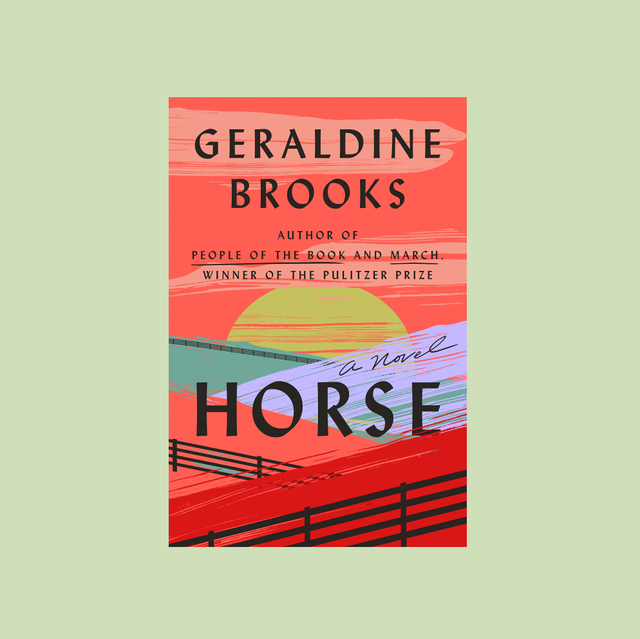
Our editors handpick the products that we feature. We may earn commission from the links on this page.
Don’t let the title fool you; Geraldine Brooks’s Horse is not Black Beauty for grown-ups. Yes, the title character is one of history’s most famous equine celebrities, a foal named Darley, who later became a pop culture phenomenon called Lexington—and was revered as the fastest horse in the world. But first and foremost, Horse is a thrilling story about humanity in all its ugliness and beauty.
Lexington is one of several characters in the book—the rest of them human—based on real-life figures, as Horse is a product of careful research fleshed out with vivid imagination. It’s a technique that has served Brooks well; she earned a Pulitzer Prize for March, which follows the fictional father in Little Women, based in part on the real-life Bronson Alcott. But while the historic detail in the book is impressive, it’s the fictions filling in the blanks where Brooks’s genius truly shines.
Arguably the central character is Jarrett, the enslaved groom who raised Darley from a foal and risks his own life more than once to protect the horse. In her fascinating afterword, Brooks explains that she was inspired to create Jarrett after reading about a missing painting by equestrian artist T.J. Scott, described in an 1870 issue of Harper’s New Monthly Magazine as depicting Lexington being led by “black Jarrett, his groom.” With no further information about the man available, Brooks took his name and created a complex individual, realizing the true scope of Horse. During her research into 19th-century racing, she found, as she writes in her end note, “this thriving industry was built on the labor and skill of Black horsemen, many of whom were, or had been, enslaved…it became clear to me that this novel could not merely be about a racehorse, it would also need to be about race.”
The lost painting features in the book as well, as Brooks imagines a dramatic and violent history for it that connects characters and time periods. In 1954, Martha Jackson, a female dealer in a male-dominated art world, stumbles upon a similar work that is tangentially involved in the death of Jackson Pollock. In 2019, Jess seeks portraits of Lexington to help reshape his skeleton for an exhibit, and Theo, a Lagos-born, Oxford-educated art historian, finds a cast-off horse painting and begins studying equine art through a post-colonial lens. Examining a portrait of a thoroughbred named Richard Singleton alongside several Black grooms, titled Richard Singleton with Viley’s Harry, Charles, and Lew, Theo thinks that the artist “may have portrayed these men as individuals, but perhaps only in the same clinical way that he exactly documented the splendid musculature of the thoroughbred. It was impossible not to suspect some equivalence between the men and the horse: valued, no doubt, but living by the will of their enslaver, submitting to the whip.” He goes on to notice that, “while the horse had two names, the men had only one.”
Horse unfolds in chapters told from various points of view, and each time the reader is reunited with Jarrett, the chapter bears the name of his enslaver, as the groom might have been described in a painting’s title: Warfield’s Jarrett, Ten Broeck’s Jarrett, Alexander’s Jarrett. It’s a device that forces the reader to consider a world in which gifted horses are valued more than human beings. And that’s not the only big question Horse asks. At a research facility studying the declining population of North Atlantic whales, Jess muses on “the artistry and the ingenuity of our own species,” and wonders, “How could we be so creative and destructive at the same time?” But far from being a preachy cautionary tale about man’s inhumanity to man and beast, this novel is a page-turner that reads like a series of mysteries: Who is this horse? Who was his groom? What happened to their shared portrait?
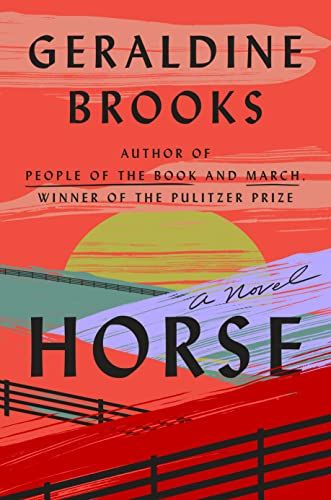
While those explorations drive the plot, it’s the voices of the different characters, each so distinct, that make the novel as delightful to read as it is thought-provoking. In 2019, Jess thinks, “careers can be as accidental as car wrecks.… Not many girls from Burwood Road in western Sydney got to go to French Guiana and bounce through the rainforest with scorpion specimens pegged across the jeep like so much drying laundry.” In 1854, Jarrett observes that “to be spoken of as livestock was as bitter as a gallnut.” And that same year, the equine painter, gambler, and sometime reporter Thomas J. Scott muses, “Modest winnings, payments for reportage—as ever, paltry and laggard—would not have kept me long in New Orleans, a city whose ample pleasures are a constant tax upon the purse.” The care with which Brooks crafts each character’s voice is a plea to look past the categorical labels and legends with which we describe each other, to truly see the individual. Paired with a compelling plot, the evocative voices create a story so powerful, reading it feels like watching a neck-and-neck horse race, galloping to its conclusion—you just can’t look away.

How to Feel Powerful in Every Setting

50 Unique Gifts for Book Lovers

Judy Blume on Why She Quit Writing

An Unexpected Remedy for Anxious Thoughts

Cheslie Kryst’s Mother Is Honoring Her Legacy

8 Classic Books to Get Lost In

What Bird-Watching Taught Me About Motherhood
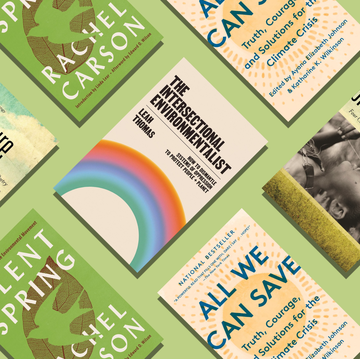
5 Hopeful Books About Our Planet

10 Best Books to Give a Recent Graduate
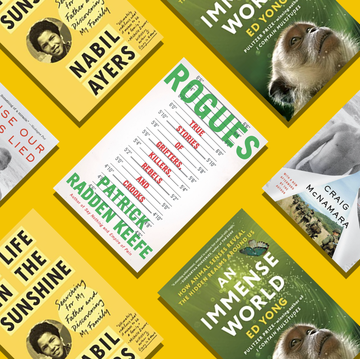
Celebrate Father’s Day with These 18 Books

Best New Books of Spring
White Author, Black Paragons
When writing across cultural divides flattens characters

I t’s 2019 in Washington, D.C. , and Theo is changing his art-history dissertation after finding a painting of a horse in his neighbor’s giveaway pile. He is 26 years old, a Black Londoner (his mother is Yoruba, his father Californian) and a former star polo player. He left the sport for academia because of relentless racist harassment, and now studies stereotypes of Africans in British painting. The working title for his dissertation is Sambo, Othello, and Uncle Tom: Caricature, Exoticization, Subalternization, 1700–1900 . He jogs with his dog for exercise, careful to wear his Georgetown shirt because “his favorite run took him through lily-white Northwest Washington and Daniel, his best friend at Yale, had instructed him that a Black man, running, should dress defensively.” Because he’s from the U.K., he may not understand all the nuances of American racism, but he understands enough. When the lady across the street, from whom he got the horse painting, flinches as he approaches to help her, he feels “the usual gust of anger” and takes a deep breath, saying to himself: “Just a White woman, White-womaning.”

Explore the July/August 2022 Issue
Check out more from this issue and find your next story to read.
Theo might be chagrined to find himself a protagonist in Horse , Geraldine Brooks’s latest work of historical fiction, which braids his story with the narrative of Jarret, an enslaved groom of the horse in the 19th-century painting Theo finds. For one, Theo is skeptical of white artists taking on Black subjects. The original hypothesis of his dissertation is that the Africans in British portraits were rendered less as people than as objects: “His argument mirrored Frederick Douglass’s caustic essay , arguing that no true portraits of Africans by White artists existed; that White artists couldn’t see past their own ingrained stereotypes of Blackness.”
This is a self-conscious—and bold—inclusion for a novel with not one but two young Black male protagonists written by a 66-year-old white Australian woman. Brooks is a skilled journalist and an acclaimed novelist, and Horse is not her first foray into historical fiction set in part during the American Civil War. Her novel March is narrated primarily by the father in Little Women , and tells the story of Mr. March’s years as a chaplain for the Union Army. That novel won the Pulitzer Prize in 2006. Neither is this her first time writing across cultural divides. Her first nonfiction book, Nine Parts of Desire (1994) , was about the “hidden world of Islamic women.” Her 2011 novel, Caleb’s Crossing , is about a young white Puritan girl’s friendship with Caleb Cheeshahteaumauk , a character inspired by a Wampanoag man of the same name who was the first Native American to graduate from Harvard, in 1665.
This kind of venture has become trickier in the past 10 years. The publishing world has been racked by overdue debate about cultural appropriation and whether and how white authors should write characters from other racial or ethnic backgrounds. Five years after Brooks published Caleb’s Crossing , the white American writer Lionel Shriver gave a notorious keynote speech— briefly donning a sombrero —at a Brisbane literary festival, ranting about the “clamorous world of identity politics” and the threat she felt it posed to literature: “The kind of fiction we are ‘allowed’ to write is in danger of becoming so hedged, so circumscribed, so tippy-toe, that we’d indeed be better off not writing the anodyne drivel to begin with.” Retorts and replies followed. “ It is possible to write about others not like oneself , if one understands that this is not simply an act of culture and free speech, but one that is enmeshed in a complicated, painful history of ownership and division,” the novelist Viet Thanh Nguyen observed. More recently, the blockbuster turned critical conflagration American Dirt (a novel about migrant trauma, for which its white author was paid a seven-figure advance ) set off months of heated articles. Some pointed out that immigrants remain under-published and underpaid for their own stories in the American media market; others objected to the implication that any identity-based limits should be placed on a fiction writer’s license.
In putting Douglass’s argument so early in the book—on page 57—Brooks signals to us that she enters her latest project knowingly. She’s read up on the Discourse. A gauntlet has been thrown—white artists can’t do justice to Black subjects—and she will take it up. Despite her evident efforts, the book does not turn out to be the counterexample she might have hoped.
H orse started with a real horse: Lexington, who was one of the great racehorses of the 19th century and a prolific sire. When Lexington died, his skeleton became an exhibit but was later forgotten in the attic of the Smithsonian’s National Museum of Natural History . Brooks, a horsewoman herself, grew fascinated with the painter Thomas J. Scott, who did several portraits of Lexington, and she was especially curious about one of Scott’s portraits that remains missing. A description of that painting in a July 1870 issue of Harper’s magazine describes Lexington being led by “black Jarret, his groom.” Nothing else is known about the real Jarret, and Horse grew out of Brooks’s imaginings of the life he might have lived. She had wanted to write about horses, she admits in her afterword. But as she researched horse racing in the antebellum South, “it became clear to me that this novel could not merely be about a racehorse; it would also need to be about race.”
The structure of the novel is poly-vocal, occupying a loose, floating third person as its short chapters jump among its cast of characters. The story is bounded historically by 2020 in Washington, D.C., where Theo’s find is identified as a lost 19th-century portrait of Lexington, and the 1850s at several southern horse-breeding farms, where Jarret, a gifted and reserved young horse trainer, develops a spiritual, even psychic connection with a newborn foal named Darley, who will later become famous as Lexington. The boy and the horse become best friends and deeply bonded partners. “That horse about the only one thing I care for,” Jarret declares. Though his father, also a horse trainer, has bought his own freedom, Jarret remains enslaved, and his story line is fraught with vulnerability: Jarret and Lexington are sold together from one wealthy landowner to another, to another.
Occasionally, the book swerves to the 1950s in New York, where Jackson Pollock and Lee Krasner make an appearance: Their friend, an art dealer named Martha Jackson, acquires one of the lost Lexington paintings from her maid, who seems to have inherited it from an ancestor connected to Jarret. (This third era’s plot, which is also based in historical fact, is notably less developed than the other two.) Sometimes Jarret’s perspective dominates in the novel; other times Scott’s or Theo’s vantage prevails—or that of Jess, a young white Australian woman who’s pursuing her fascination with zoological research at the Smithsonian in 2019; or that of Mary, the young daughter of the white emancipationist Cassius Clay and a frequent presence at the Meadows, the farm where Jarret and his father work. Intermittently, Brooks serves up a mix of multiple viewpoints over the course of a single chapter.
But in spirit, the book belongs to Jarret and Theo, with complementary foils in the form of the two young white women. (While there are several Black female characters in the book, none is granted complex interiority.) In 2019, Theo begins to date Jess, despite some ambivalence. In 1850, Mary likes to hang around the barns and talk to Jarret (who is two years older) while he works. Brooks has taken pains to make both women flawed: Whereas Jarret and Theo are carefully dressed, meticulous, and possessed of “impeccable manners,” these women are often careless, unkempt, emotionally fragile—and racist without quite knowing it. Jess and Theo meet because she assumes he’s stealing her bike. She’s then so embarrassed by her behavior that she tells him she found the incident traumatic. (“Typical, Theo thought. He’d been accused, yet she was traumatized.”) When Mary is angry, she reminds Jarret that he’s enslaved, and then feels hurt later when she tells him that she considers them friends and he is too incredulous at the idea to reciprocate.
Brooks clearly attempts to demonstrate self-awareness, to preemptively deflect any criticism that she has favored the characters whose life experience most resembles her own—but the dynamic she creates between Theo and Jess and between Jarret and Mary flattens all the characters. Theo and Jarret are described, at every turn, as exemplary, socially and spiritually. They are handsome, tall, gifted, and educated (Jarret takes an opportunity to learn how to read). Animals instinctively trust them (Theo and his dog are exquisitely attuned). They are constantly swallowing their rage. They are always patiently explaining something. Where others stumble, they are steady. Theo tells Jess at one point that he wants to help his old-lady neighbor even if she’s racist, because “ ‘whatever she might be, it doesn’t mean that I won’t do what I know to be right.’ Jess sighed, defeated, and smiled at him. ‘You’re just a better person than me, I guess.’ ”
Theo is a better person than Jess, no doubt, but Brooks grants Jess something that she denies Theo—and to a degree Jarret. Jess gets to fail; Jess gets to change. By contrast, Theo is static. Sometimes he reads like a caricature: “He was his own man long before any of his peers even realized that was an option. He’d embraced life as a rootless loner, at home in the world but belonging nowhere in particular. Comfortable with a wide range of people, close to very few.” He remains angry but patient, smart, gentlemanly, and gentle to the end.
Jarret, the most rounded of the many characters who take turns narrating Horse , changes less than you would expect given that the story tracks him from adolescence into his late 30s. His spiritual evolution is condensed into two formative episodes. In the first, he is saved by Mary and her father from an ill-conceived escape attempt, and he learns thereafter to control his anger and work within the constraints of his enslavement. The second leap forward—which is presented as his real moral maturation—comes when he is briefly forbidden to care for Lexington and is sent to labor in the fields, where he is whipped.
Startlingly, this is framed as a blessing:
He conceived, in those hard days, a renewed gratitude toward his father, who had endured hardship to rise to a measure of dignity that had extended its protective cloak over Jarret’s childhood. He learned, in those fields, what he had been spared. He felt a new understanding for the folk who bore it, and an admiration for those brave enough to risk everything to run away from such a life. An empathy grew in him. He began to watch people with the sensitive attention he’d only ever accorded his horses … Even as his world contracted and pressed in upon him, in equal measure his heart expanded.
When Jarret finally reunites with Lexington and leaves that plantation, he reflects that “he wasn’t sorry to have seen what he’d seen, and learned what he learned. Not just the book learning. He felt larger in spirit. There was a space in his soul for the suffering of people. He resolved to take account of their lives, the heavy burdens they carried.”
These passages call to mind the history of white people insisting that whippings under chattel slavery were an experience of moral training upon which the enslaved might reflect with sanguine gratitude—a history that Brooks is aware of but nevertheless echoes here. Jarret, an emotional teenager who doesn’t seem to lack empathy in the first place, is turned into a saint, floating somewhat above the action.
I keep thinking about Parul Sehgal’s elegant panning of American Dirt , in which she joins the novelist Hari Kunzru in arguing that “imagining ourselves into other lives and other subjectives is an act of ethical urgency.” Transracial authorial imagining, she writes, is a profound undertaking. “The caveat is to do this work of representation responsibly, and well.” Brooks’s attempt is made earnestly, but not well. In keeping with the character construction, the plot itself veers toward formula. Horse relies on ungainly cliff-hangers to pull the reader from chapter to chapter. (In one, Jess inspects Lexington’s skeleton in 2019 and concludes, “Something had happened to this horse when it was alive. Something dreadful.”) The romance is bland. (“Was it the wine, or was she becoming infatuated with this man?”) The details occasionally inspire a flinch (describing an enslaved young man as a “dusky youth”), and the moments when Brooks addresses racism more directly can read as self-conscious and pedantic. (“Look. It’s not your fault you get to move easy in the world,” Theo’s friend Daniel tells Jess after an act of violence. “We just can’t afford to.”)
Brooks is an accomplished writer, and many of her gifts are evident amid the clumsiness of the overall effort. The relationship between Jarret and Lexington is intimate and compelling. When they are briefly separated, the uncertainty of their reunion feels like an existential crisis. Brooks has a talent and passion for research that is fully expressed here—she writes beautifully about the anatomy of horses and the delicate work of “articulating” their skeletons, arranging every bone in its proper place. The descriptions of 19th-century horse racing, when the animals were bred differently and raced much longer tracks, are thrilling. Brooks has attended with equal care to the quotidian details of each era (corn pone in the antebellum South, bebop for Jackson Pollock, mid-century-modern furniture for Theo).
I read to the end wanting Horse to right itself, to be one of those books that achieve the creative and ethical intersubjectivity that signals great fiction. Brooks gives Jarret and Theo just enough spark to make us wish she’d also given them a more deeply imagined, nuanced, and substantial portrayal. Each ends as a trope: one a man who triumphs against all odds, the other a martyr. Brooks’s sympathies are evidently with them, and so are ours. But sympathy seems like an inadequate achievement in a project like this, which takes as its subject the worst consequences of white Americans’ failure to recognize the full humanity of Black people. Sympathy has a way of falling short, aesthetically as well as politically—it is a frail substitute for the knotty, vital insight that can emerge from sustained immersion in another psyche, another soul. If readers feel sorry for Theo and Jarret without really needing to believe in them as whole beings, what exactly do their portraits accomplish?
This article appears in the July/August 2022 print edition with the headline “A White Author Fails Her Black Characters.”
When you buy a book using a link on this page, we receive a commission. Thank you for supporting The Atlantic.
- ADMIN AREA MY BOOKSHELF MY DASHBOARD MY PROFILE SIGN OUT SIGN IN
Awards & Accolades
Our Verdict
New York Times Bestseller
IndieBound Bestseller

by Geraldine Brooks ‧ RELEASE DATE: June 14, 2022
Strong storytelling in service of a stinging moral message.
A long-lost painting sets in motion a plot intertwining the odyssey of a famed 19th-century thoroughbred and his trainer with the 21st-century rediscovery of the horse’s portrait.
In 2019, Nigerian American Georgetown graduate student Theo plucks a dingy canvas from a neighbor’s trash and gets an assignment from Smithsonian magazine to write about it. That puts him in touch with Jess, the Smithsonian’s “expert in skulls and bones,” who happens to be examining the same horse's skeleton, which is in the museum's collection. (Theo and Jess first meet when she sees him unlocking an expensive bike identical to hers and implies he’s trying to steal it—before he points hers out further down the same rack.) The horse is Lexington, “the greatest racing stallion in American turf history,” nurtured and trained from birth by Jarret, an enslaved man who negotiates with this extraordinary horse the treacherous political and racial landscape of Kentucky before and during the Civil War. Brooks, a White writer, risks criticism for appropriation by telling portions of these alternating storylines from Jarret’s and Theo’s points of view in addition to those of Jess and several other White characters. She demonstrates imaginative empathy with both men and provides some sardonic correctives to White cluelessness, as when Theo takes Jess’ clumsy apology—“I was traumatized by my appalling behavior”—and thinks, “Typical….He’d been accused, yet she was traumatized.” Jarret is similarly but much more covertly irked by well-meaning White people patronizing him; Brooks skillfully uses their paired stories to demonstrate how the poison of racism lingers. Contemporary parallels are unmistakable when a Union officer angrily describes his Confederate prisoners as “lost to a narrative untethered to anything he recognized as true.…Their fabulous notions of what evils the Federal government intended for them should their cause fail…was ingrained so deep, beyond the reach of reasonable dialogue or evidence.” The 21st-century chapters’ shocking denouement drives home Brooks’ point that too much remains the same for Black people in America, a grim conclusion only slightly mitigated by a happier ending for Jarret.
Pub Date: June 14, 2022
ISBN: 978-0-39-956296-9
Page Count: 416
Publisher: Viking
Review Posted Online: March 15, 2022
Kirkus Reviews Issue: April 1, 2022
LITERARY FICTION
Share your opinion of this book
More by Geraldine Brooks

BOOK REVIEW
by Geraldine Brooks

edited by Geraldine Brooks

More About This Book

SEEN & HEARD

by Kristin Hannah ‧ RELEASE DATE: Feb. 6, 2024
A dramatic, vividly detailed reconstruction of a little-known aspect of the Vietnam War.
A young woman’s experience as a nurse in Vietnam casts a deep shadow over her life.
When we learn that the farewell party in the opening scene is for Frances “Frankie” McGrath’s older brother—“a golden boy, a wild child who could make the hardest heart soften”—who is leaving to serve in Vietnam in 1966, we feel pretty certain that poor Finley McGrath is marked for death. Still, it’s a surprise when the fateful doorbell rings less than 20 pages later. His death inspires his sister to enlist as an Army nurse, and this turn of events is just the beginning of a roller coaster of a plot that’s impressive and engrossing if at times a bit formulaic. Hannah renders the experiences of the young women who served in Vietnam in all-encompassing detail. The first half of the book, set in gore-drenched hospital wards, mildewed dorm rooms, and boozy officers’ clubs, is an exciting read, tracking the transformation of virginal, uptight Frankie into a crack surgical nurse and woman of the world. Her tensely platonic romance with a married surgeon ends when his broken, unbreathing body is airlifted out by helicopter; she throws her pent-up passion into a wild affair with a soldier who happens to be her dead brother’s best friend. In the second part of the book, after the war, Frankie seems to experience every possible bad break. A drawback of the story is that none of the secondary characters in her life are fully three-dimensional: Her dismissive, chauvinistic father and tight-lipped, pill-popping mother, her fellow nurses, and her various love interests are more plot devices than people. You’ll wish you could have gone to Vegas and placed a bet on the ending—while it’s against all the odds, you’ll see it coming from a mile away.
Pub Date: Feb. 6, 2024
ISBN: 9781250178633
Page Count: 480
Publisher: St. Martin's
Review Posted Online: Nov. 4, 2023
Kirkus Reviews Issue: Dec. 1, 2023
FAMILY LIFE & FRIENDSHIP | GENERAL FICTION | HISTORICAL FICTION
More by Kristin Hannah
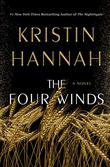
by Kristin Hannah

PERSPECTIVES

BOOK TO SCREEN

by Max Brooks ‧ RELEASE DATE: June 16, 2020
A tasty, if not always tasteful, tale of supernatural mayhem that fans of King and Crichton alike will enjoy.
Are we not men? We are—well, ask Bigfoot, as Brooks does in this delightful yarn, following on his bestseller World War Z (2006).
A zombie apocalypse is one thing. A volcanic eruption is quite another, for, as the journalist who does a framing voice-over narration for Brooks’ latest puts it, when Mount Rainier popped its cork, “it was the psychological aspect, the hyperbole-fueled hysteria that had ended up killing the most people.” Maybe, but the sasquatches whom the volcano displaced contributed to the statistics, too, if only out of self-defense. Brooks places the epicenter of the Bigfoot war in a high-tech hideaway populated by the kind of people you might find in a Jurassic Park franchise: the schmo who doesn’t know how to do much of anything but tries anyway, the well-intentioned bleeding heart, the know-it-all intellectual who turns out to know the wrong things, the immigrant with a tough backstory and an instinct for survival. Indeed, the novel does double duty as a survival manual, packed full of good advice—for instance, try not to get wounded, for “injury turns you from a giver to a taker. Taking up our resources, our time to care for you.” Brooks presents a case for making room for Bigfoot in the world while peppering his narrative with timely social criticism about bad behavior on the human side of the conflict: The explosion of Rainier might have been better forecast had the president not slashed the budget of the U.S. Geological Survey, leading to “immediate suspension of the National Volcano Early Warning System,” and there’s always someone around looking to monetize the natural disaster and the sasquatch-y onslaught that follows. Brooks is a pro at building suspense even if it plays out in some rather spectacularly yucky episodes, one involving a short spear that takes its name from “the sucking sound of pulling it out of the dead man’s heart and lungs.” Grossness aside, it puts you right there on the scene.
Pub Date: June 16, 2020
ISBN: 978-1-9848-2678-7
Page Count: 304
Publisher: Del Rey/Ballantine
Review Posted Online: Feb. 9, 2020
Kirkus Reviews Issue: March 1, 2020
GENERAL SCIENCE FICTION & FANTASY | GENERAL THRILLER & SUSPENSE | SCIENCE FICTION
More by Max Brooks

by Max Brooks

- Discover Books Fiction Thriller & Suspense Mystery & Detective Romance Science Fiction & Fantasy Nonfiction Biography & Memoir Teens & Young Adult Children's
- News & Features Bestsellers Book Lists Profiles Perspectives Awards Seen & Heard Book to Screen Kirkus TV videos In the News
- Kirkus Prize Winners & Finalists About the Kirkus Prize Kirkus Prize Judges
- Magazine Current Issue All Issues Manage My Subscription Subscribe
- Writers’ Center Hire a Professional Book Editor Get Your Book Reviewed Advertise Your Book Launch a Pro Connect Author Page Learn About The Book Industry
- More Kirkus Diversity Collections Kirkus Pro Connect My Account/Login
- About Kirkus History Our Team Contest FAQ Press Center Info For Publishers
- Privacy Policy
- Terms & Conditions
- Reprints, Permission & Excerpting Policy
© Copyright 2024 Kirkus Media LLC. All Rights Reserved.
Popular in this Genre
Hey there, book lover.
We’re glad you found a book that interests you!
Please select an existing bookshelf
Create a new bookshelf.
We can’t wait for you to join Kirkus!
Please sign up to continue.
It’s free and takes less than 10 seconds!
Already have an account? Log in.
Trouble signing in? Retrieve credentials.
Almost there!
- Industry Professional
Welcome Back!
Sign in using your Kirkus account
Contact us: 1-800-316-9361 or email [email protected].
Don’t fret. We’ll find you.
Magazine Subscribers ( How to Find Your Reader Number )
If You’ve Purchased Author Services
Don’t have an account yet? Sign Up.
- Skip to main content
- Keyboard shortcuts for audio player
Author Interviews
The novel 'horse' is the story of an enslaved man grooming a winning thoroughbred.
Lexington was a winning thoroughbred in the mid-1800's, and the basis of Geraldine Brooks' new novel, "Horse." Scott Simon talks with her about her story.
Copyright © 2022 NPR. All rights reserved. Visit our website terms of use and permissions pages at www.npr.org for further information.
NPR transcripts are created on a rush deadline by an NPR contractor. This text may not be in its final form and may be updated or revised in the future. Accuracy and availability may vary. The authoritative record of NPR’s programming is the audio record.
Why is Christian Science in our name?
Our name is about honesty. The Monitor is owned by The Christian Science Church, and we’ve always been transparent about that.
The Church publishes the Monitor because it sees good journalism as vital to progress in the world. Since 1908, we’ve aimed “to injure no man, but to bless all mankind,” as our founder, Mary Baker Eddy, put it.
Here, you’ll find award-winning journalism not driven by commercial influences – a news organization that takes seriously its mission to uplift the world by seeking solutions and finding reasons for credible hope.
Your subscription makes our work possible.
We want to bridge divides to reach everyone.

Get stories that empower and uplift daily.
Already a subscriber? Log in to hide ads .
Select free newsletters:
A selection of the most viewed stories this week on the Monitor's website.
Every Saturday
Hear about special editorial projects, new product information, and upcoming events.
Select stories from the Monitor that empower and uplift.
Every Weekday
An update on major political events, candidates, and parties twice a week.
Twice a Week
Stay informed about the latest scientific discoveries & breakthroughs.
Every Tuesday
A weekly digest of Monitor views and insightful commentary on major events.
Every Thursday
Latest book reviews, author interviews, and reading trends.
Every Friday
A weekly update on music, movies, cultural trends, and education solutions.
The three most recent Christian Science articles with a spiritual perspective.
Every Monday
‘Horse’ unfolds a riveting tale of a champion thoroughbred and his enslaved trainer
“Horse,” by Geraldine Brooks, melds a historic tale of an enslaved Black horse trainer with a modern-day story of interracial romance.

- By Heller McAlpin Contributor
June 14, 2022
Geraldine Brooks' “Horse” circles two tracks: one a riveting historical novel about a talented, enslaved Black horse trainer and his charge, the famous white-footed racehorse named Lexington, the other a contemporary story about an interracial romance between two characters who connect over their interest in the horse. The result is a book not just about a racehorse, but about race.
While not as well known today as Seabiscuit, Lexington was a champion who became "the greatest thoroughbred stud sire in racing history." His 575 foals included many Belmont and Preakness winners, including Preakness himself.
Brooks, clearly a horse lover, explores a fascinating sidebar to history that highlights how the lucrative business of horse racing was deeply entwined with the institution of slavery in the pre-Civil War South. The skilled Black grooms, trainers, and jockeys – many of whom were enslaved – have yet to be given their due. Her sensitive, deeply researched novel is a welcome step toward correcting the historical record.
Jarret, Lexington's devoted groom and trainer, is the most compelling and wholly realized character, albeit largely imagined due to what Brooks says in her afterward is woeful lack of documentation about him. But from the moment we meet him in 1850, on the day of Lexington's conception on a Kentucky horse farm called The Meadows, he's a hero who is easy to root for.
At 13, Jarret is already a horse-whisperer who has demonstrated a rare, gentle affinity with even the most difficult horses. He assists his father, Harry Lewis, the head trainer, who foresaw the advantages of combining the violent stud Boston's pedigree with that of the ornery mare Alice Corneal. Harry has managed to buy his own freedom but is still saving to pay for his son's, and is excited when his boss, Dr. Elisha Warfield, promises him an interest in the bay colt in lieu of a year's wages. But as the value of both Lexington and Jarret increase, freedom recedes out of reach.
Brooks frames the intertwined history of Jarret and Lexington with a modern-day love story between Jess, an Australian-born zoologist who is restoring Lexington's skeleton to exhibit at the Smithsonian, and Theo, a doctoral student in art history who rescues what turns out to be a valuable portrait of Lexington and his trainer from his neighbor's trash. Unfortunately, their interest in the horse is more convincing than their interest in each other, which seems engineered to provide a platform on which to address racial issues.
Theo, the son of two diplomats – a Yoruba mother and an American father – grew up all over the world and played polo at Oxford. He is no stranger to racist slights, and in fact, on his first encounter with Jess outside the Smithsonian, where he has taken his treasure to be identified, she accuses him of trying to steal her bike when she sees him bent over the lock of his own identical model. He calmly points to hers, further down the rack.
The painting, he learns, is by Thomas J. Scott, an itinerant equine artist trained by Edward Troye, the pre-eminent Swiss-born horse portraitist of his era. Scott was hired by wealthy patrons to capture their champions on canvas before equestrian portraiture was succeeded by photography following the Civil War.
Theo is particularly excited to have found a portrait of a top-hatted Black person "depicted possessing a dignified authority." The groom's self-assured deportment upends Theo's proposed thesis on Africans in British art, based on Frederick Douglass' contention that white artists "couldn't see past their own ingrained stereotypes of Blackness."
In a narrative that smoothly jumps between multiple strands in both past and present, Brooks weaves in the story of the mutual esteem that grows between the white painter Scott and the Black groom Jarret, in part based on their shared respect for horses' feelings. Scott notes that while Black people aren't allowed to own racehorses, there's no law against having a picture of a horse, and twice gives paintings of Lexington to Jarret.
Tracing the path of Scott's canvases leads to yet another fascinating (and partially true) strand of Brooks' book, which involves a New York art dealer named Martha Jackson, who, in exchange for a couple of Jackson Pollock's paintings, traded the sports car in which Pollock later died. Upon her own death, the art dealer's bequest to the Smithsonian included a portrait of Lexington by Scott, an anachronism among her modern collection. Brooks invents a lovely story to explain how she came to own it.
Brooks, who wrote about the Civil War in her powerful 2006 Pulitzer Prize-winning novel "March," takes readers to some dark places in “Horse.” Whether on a Louisiana plantation's cotton field in the 1850s, a brutal rebel raid in war-torn Kentucky, or following a Black man just going about his business in contemporary Washington, she never lets us forget the ongoing scourge of racism.
You can always bet on Brooks to deliver a smart, eye-opening read. But without giving away too much, I should warn readers that by piling on a galling contemporary event meant to underscore America's terrible history of bigotry, she overloads “Horse” with more than it can comfortably carry. That said, not just horse lovers will be enthralled by this often heart-pounding novel about the legacy of a remarkable thoroughbred.
Heller McAlpin reviews books regularly for the Monitor, The Wall Street Journal, and NPR.

Help fund Monitor journalism for $11/ month
Already a subscriber? Login

Monitor journalism changes lives because we open that too-small box that most people think they live in. We believe news can and should expand a sense of identity and possibility beyond narrow conventional expectations.
Our work isn't possible without your support.
Unlimited digital access $11/month.

Digital subscription includes:
- Unlimited access to CSMonitor.com.
- CSMonitor.com archive.
- The Monitor Daily email.
- No advertising.
- Cancel anytime.

Related stories
Review an octopus, a widow, and a decades-long missing-person case, review consolation in solitude: retracing the steps of henry david thoreau, review toni morrison’s ‘recitatif’ is a brilliant guessing game, share this article.
Link copied.
Dear Reader,
About a year ago, I happened upon this statement about the Monitor in the Harvard Business Review – under the charming heading of “do things that don’t interest you”:
“Many things that end up” being meaningful, writes social scientist Joseph Grenny, “have come from conference workshops, articles, or online videos that began as a chore and ended with an insight. My work in Kenya, for example, was heavily influenced by a Christian Science Monitor article I had forced myself to read 10 years earlier. Sometimes, we call things ‘boring’ simply because they lie outside the box we are currently in.”
If you were to come up with a punchline to a joke about the Monitor, that would probably be it. We’re seen as being global, fair, insightful, and perhaps a bit too earnest. We’re the bran muffin of journalism.
But you know what? We change lives. And I’m going to argue that we change lives precisely because we force open that too-small box that most human beings think they live in.
The Monitor is a peculiar little publication that’s hard for the world to figure out. We’re run by a church, but we’re not only for church members and we’re not about converting people. We’re known as being fair even as the world becomes as polarized as at any time since the newspaper’s founding in 1908.
We have a mission beyond circulation, we want to bridge divides. We’re about kicking down the door of thought everywhere and saying, “You are bigger and more capable than you realize. And we can prove it.”
If you’re looking for bran muffin journalism, you can subscribe to the Monitor for $15. You’ll get the Monitor Weekly magazine, the Monitor Daily email, and unlimited access to CSMonitor.com.
Subscribe to insightful journalism
Subscription expired
Your subscription to The Christian Science Monitor has expired. You can renew your subscription or continue to use the site without a subscription.
Return to the free version of the site
If you have questions about your account, please contact customer service or call us at 1-617-450-2300 .
This message will appear once per week unless you renew or log out.
Session expired
Your session to The Christian Science Monitor has expired. We logged you out.
No subscription
You don’t have a Christian Science Monitor subscription yet.
Horse: A Novel
- By Geraldine Brooks
- Reviewed by Patricia Schultheis
- June 28, 2022
A sweeping look at race — and racing — in America.

Horse by Geraldine Brooks, winner of the 2006 Pulitzer Prize for March , is a sprawling roman à clef covering nearly 170 years of American history, stretching from antebellum Kentucky to present-day Washington, DC. Thoroughbreds provide the unifying element for this far-reaching narrative, but horses and the complex culture surrounding them are only devices for Brooks to explore her fundamental subject: race and its corrosive influence on our nation’s foundation and cancerous impact on society today.
Told from the perspective of six characters, Horse interweaves the story of the Black equestrians who made their white masters fabulously wealthy with those of contemporary young professionals struggling to form relationships despite racial microaggressions and misunderstandings.
By far, the most compelling narrative is that of Jarret, an enslaved boy in Kentucky, whom Brooks describes as being “slow to master human speech, but he could interpret the horses: their moods, their alliances, their simple wants, their many fears. He came to believe that horses lived with a world of fear, and when you grasped that you had a clear idea how to be with them.”
Jarret understands the fear horses have because he, too, is wholly dependent on the whims of others for food and shelter. And like horses, he can be beaten or sold at any moment. In the antebellum South, horses and their enslaved attendants are commodities. Nothing more.
But the night he helps his father, a free man, with the birth of a white-footed foal, Jarret’s life begins to change. “He makes me feel — hopeful,” Jarret says of the animal. “Like the future gone matter more than it did the day before he come.” Eventually, the foal is named Lexington and goes on to become a legendary racer and an even more legendary sire.
Jarret and the horse develop a profound bond that enables the young man to gain some agency over his own life. As Lexington is sold, then sold again, Jarret is sold along with him, changing from Warfield’s Jarret to Ten Broeck’s Jarret to Alexander’s Jarret. Although he has no last name, Jarret gradually becomes literate, perceptive, disciplined, canny, and empathetic. Once freed, he becomes Jarret Lewis, no one’s man but his own.
Observing Jarret’s transformation from boy to man is Thomas J. Scott, an itinerant artist and writer hired by wealthy patrons to paint their horses. Scott’s narrative is the only one told in the first person — through his diaries — and Brooks does a wonderful job capturing the artist’s obsequious tone and cool detachment toward the moneyed gentry who pay him. Over the course of many years, Scott paints several pictures of Lexington. An early, rough one he gives to young Jarret. Later, Scott gives Jarret another one, although it, too, is imperfect.
Scott’s paintings form the basis for the chapters covering the 1950s and 2019, but Brooks, who so beautifully captures the nuanced and constant sense of threat permeating the Old South, fails to achieve similar tension with her contemporary characters. Martha Jackson, for instance, who buys one of Scott’s paintings from her maid, remains too slight to engross the reader. Yes, she does ultimately bequeath the work to the Smithsonian (an action that impacts later developments in Horse ), but a subplot involving her interactions with Jackson Pollock is needlessly distracting.
The more successful modern-day thread involves Jess, a white Australian conservator at the Smithsonian, and Theo, a Black doctoral student in art history. An African American in the sense that his father was American and his mother is Nigerian, Theo is a liminal figure, unencumbered by an ancestry of enslavement, yet impacted by today’s prejudice.
“Meet cute” might describe his initial collision with Jess, but “contrived” may be more accurate. Both ride expensive, blue Trek CrossRip bikes; both have lived in Canberra and know what a Kelpie is. (It’s an Australian sheepdog.) With this much in common, what could go wrong? Apparently, a lot.
Yet despite mixed messages and microaggressions, Jess and Theo begin a fitful relationship that might border on cliché if not for the fact that Brooks’ subject isn’t love. It’s race in America. And her gripping, tragic conclusion to Horse exemplifies the truth of Faulkner’s memorable assertion: “The past is never dead. It’s not even past.”
Patricia Schultheis is the author of Baltimore’s Lexington Market , published by Arcadia Publishing in 2007, and of St. Bart’s Way , an award-winning story collection published by Washington Writers’ Publishing House in 2015. Her latest book is A Balanced Life , published by All Things That Matter Press in 2018.
Support the Independent by purchasing this title via our affliate links: Amazon.com Or through Bookshop.org
Book Review in Fiction More
Mothers and Other Strangers: A Novel
By gina sorell.

A daughter searches for the truth about her past.
- Mystery & Suspense ,
By Eduardo Halfon; translated by Lisa Dillman and Daniel Hahn

This uneven novella boasts compelling scenes but scant emotional resonance.
Advertisement
- Biggest New Books
- Non-Fiction
- All Categories
- First Readers Club Daily Giveaway
- How It Works

Get the Book Marks Bulletin
Email address:
- Categories Fiction Fantasy Graphic Novels Historical Horror Literary Literature in Translation Mystery, Crime, & Thriller Poetry Romance Speculative Story Collections Non-Fiction Art Biography Criticism Culture Essays Film & TV Graphic Nonfiction Health History Investigative Journalism Memoir Music Nature Politics Religion Science Social Sciences Sports Technology Travel True Crime
May 16, 2024

- How oil companies manipulate journalism
- Inside the OpenAI office’s library
- On how Alice Munro wrote sex
The Horse by Willy Vlautin: tuned to the broken-down key of life
Washed-up musician is forced to make a move when a horse mysteriously appears outside his shack.
The Horse by Willy Vlautin features many musical vignettes
The Horse is Willy Vlautin ’s most satisfying book to date, with its central music narrative adorned with vivid vignettes of his usual offbeat, misfit characters tuned to the broken-down key of life in twilight towns filled with temptation and trouble.
Vlautin is one of the finest singer-songwriters around, in bands Richmond Fontaine and The Delines, and The Horse is the first time he has written about music. His music and novels are close cousins, registering life’s everyday struggles, of “hard times testing the easy”.
Al Ward is at the heart of hard times in The Horse. A washed-up sixtysomething musician living near a deserted mine, carless and 30 miles from a town and 6,000ft up, Al has a strong supply of pre-crushed kismet and is struggling with anxiety (“As though someone was trying to push him out of an aeroplane from thirty thousand feet”) and alcoholism (“He destroyed his life in hopes of saving it”).
He awakens one morning to find a mistreated stray horse outside his shack. The horse forces Al to make a move, allowing Vlautin to construct a clever series of musical flashbacks alongside a seemingly quixotic rolling equine-rescue mission.
Evenings and Weekends by Oisín McKenna: Impressive debut with hints of rap as a novel
:quality(70)/cloudfront-eu-central-1.images.arcpublishing.com/irishtimes/NPJKOMYWSQSLEZGEJMVYA6EOPI.jpg)
‘I loved Alice Munro’s stories more than any I have ever read’
:quality(70)/cloudfront-eu-central-1.images.arcpublishing.com/irishtimes/ZBVY3I6XDFXV3B3GH3QJARYIYU.jpg)
First Belong to God by Austen Ivereigh: The ideas of Pope Francis on the existential crisis facing religion and the planet
:quality(70)/cloudfront-eu-central-1.images.arcpublishing.com/irishtimes/2N2HTTUVN6CGOOOJCHZQVDRC2U.jpg)
Murdle, he wrote: GT Karber brings his killer puzzle to Dublin
:quality(70)/cloudfront-eu-central-1.images.arcpublishing.com/irishtimes/IFQQ3ZHQTNG75COSIUGBIGZUDA.jpg)
It all works superbly as Vlautin intersects tender, torn and frayed episodes of wrecks, drugs and rock’n’roll into Al’s redemptive quest. The writing on music is superb; the underbelly of the working-band life, of the wannabes and never-gonna-bes rings so true here, you know Vlautin has lived part of it, seen a lot of it. “From bad nerves to no nerves in one drink”, he writes of life-on-the-road adrenaline, bringing a salty reality to the music fan’s Tequila fantasy.
[ Willy Vlautin: ‘You try to make something that is a story, and is about life, but also says something that matters’ ]
The songs and lyrics that Al has written through the years – My World Died in a Las Vegas Suite, I Reached for the Top Shelf and Ended Up in the Well, Long Hauling, Long Hurting, Long Overdue – bring some light relief to the many shades of sadness in The Horse. He also recalls a time working with colourful characters such as Mona Maverick (she “walked into the room smelling of perfume, whiskey and bacon”).
Despite all the trials and tribulations of Al’s previous life on the road, it is the music that provides sanctuary from his soul-crushing feelings of having no spiritual direction home. “When you write a good tune, it’s like holding hope in your pocket”, the usually reticent protagonist reminds himself.
The horse, meanwhile, near-blind, needing help and motionless, leads Al to a place that restores his sense of humanity (that beat-up old horse is hanging on for something ) and by the novel’s conclusion proves that nothing or no one is beyond rescuing.
IN THIS SECTION
Nobel prize winner alice munro dies at 92, irish times poll: sinn féin slide continues with five-point fall as party neck and neck with fine gael, woman’s 30-year ‘vendetta’ against brother over farm is ‘worst example of weaponisation’ of courts, i visited singapore to see why it is ranked as the top education system in the world. here’s what i learned, bambie thug should not have been making statements on ireland’s behalf, moving back to ireland would mean working till 10pm, no home of my own and bad coffee, latest stories, who is robert fico slovakian pm, seriously injured in shooting, admires putin and orban, landlords engaging in ‘sex for rent’ arrangements should be targeted by new laws, slovakian pm fico’s condition remains ‘very serious’ after surgery, man who threated to kill social worker is found suitable for restorative justice programme, irish goods exports rise to €53bn in first quarter as pharma trade recovers.
:quality(70)/cloudfront-eu-central-1.images.arcpublishing.com/sandbox.irishtimes/5OB3DSIVAFDZJCTVH2S24A254Y.png)
- Terms & Conditions
- Privacy Policy
- Cookie Information
- Cookie Settings
- Community Standards

- Humor & Entertainment

Enjoy fast, free delivery, exclusive deals, and award-winning movies & TV shows with Prime Try Prime and start saving today with fast, free delivery
Amazon Prime includes:
Fast, FREE Delivery is available to Prime members. To join, select "Try Amazon Prime and start saving today with Fast, FREE Delivery" below the Add to Cart button.
- Cardmembers earn 5% Back at Amazon.com with a Prime Credit Card.
- Unlimited Free Two-Day Delivery
- Streaming of thousands of movies and TV shows with limited ads on Prime Video.
- A Kindle book to borrow for free each month - with no due dates
- Listen to over 2 million songs and hundreds of playlists
- Unlimited photo storage with anywhere access
Important: Your credit card will NOT be charged when you start your free trial or if you cancel during the trial period. If you're happy with Amazon Prime, do nothing. At the end of the free trial, your membership will automatically upgrade to a monthly membership.
Buy new: .savingPriceOverride { color:#CC0C39!important; font-weight: 300!important; } .reinventMobileHeaderPrice { font-weight: 400; } #apex_offerDisplay_mobile_feature_div .reinventPriceSavingsPercentageMargin, #apex_offerDisplay_mobile_feature_div .reinventPricePriceToPayMargin { margin-right: 4px; } -47% $17.36 $ 17 . 36 FREE delivery Wednesday, May 22 on orders shipped by Amazon over $35 Ships from: Amazon.com Sold by: Amazon.com
Return this item for free.
Free returns are available for the shipping address you chose. You can return the item for any reason in new and unused condition: no shipping charges
- Go to your orders and start the return
- Select the return method
Save with Used - Good .savingPriceOverride { color:#CC0C39!important; font-weight: 300!important; } .reinventMobileHeaderPrice { font-weight: 400; } #apex_offerDisplay_mobile_feature_div .reinventPriceSavingsPercentageMargin, #apex_offerDisplay_mobile_feature_div .reinventPricePriceToPayMargin { margin-right: 4px; } $9.30 $ 9 . 30 $3.99 delivery May 24 - 28 Ships from: Goodwill SVNN Sold by: Goodwill SVNN

Download the free Kindle app and start reading Kindle books instantly on your smartphone, tablet, or computer - no Kindle device required .
Read instantly on your browser with Kindle for Web.
Using your mobile phone camera - scan the code below and download the Kindle app.

Follow the author

Image Unavailable

- To view this video download Flash Player

The Boy, the Mole, the Fox and the Horse: The Animated Story Hardcover – December 6, 2022
Purchase options and add-ons.
NEW YORK TIMES BESTSELLER
From Charlie Mackesy, the New York Times bestselling author of the internationally beloved tome, The Boy, The Mole, The Fox and the Horse, comes a companion book to the Academy Award ® winning film adaption—now streaming on Apple TV+.
A journey, in search of home...
This beautifully hardcover edition of The Boy, the Mole, the Fox and the Horse celebrates the work of more than a 100 animators across two years of production–with Charlie Mackesy’s distinctive illustrations brought to life in full color with hand-drawn traditional animation and accompanying hand-written script.
“I made a film with some friends about a boy, a mole, a fox and a horse—their journey together and the boy’s search for home. I hope this book gives you courage and makes you feel loved.” Love Charlie x
- Print length 192 pages
- Language English
- Publisher HarperOne
- Publication date December 6, 2022
- Dimensions 7.75 x 1 x 8.75 inches
- ISBN-10 0063256193
- ISBN-13 978-0063256194
- See all details

Frequently bought together

Similar items that may deliver to you quickly

From the Publisher

Editorial Reviews
About the author.
Charlie Mackesy began sharing conversations between the boy, the mole, the fox and the horse on his social media channels in early 2018. He published The Boy, the Mole, the Fox and the Horse in late 2019 and the book has since brought comfort and joy to over seven million readers worldwide.
After two years of collaborative work, in 2022, the short film adaptation of the book will be released alongside The Book of the Film.
Charlie collaborates with a number of charities, including Comic Relief—he created the iconic “Love Wins” t-shirt—as well as the NHS, Choose Love, WWF and The Samaritans. During the pandemic he donated prints, books, drew on hospital walls, and posted messages of support to NHS workers, which he continues.
Charlie began his career as a cartoonist for The Spectator and a book illustrator for Oxford University Press. He spent time in America as a portrait painter and ran art therapy workshops for Alzheimer's sufferers and Holocaust survivors. He lived and painted in South Africa, and collaborated with Nelson Mandela on a lithograph project, "The Unity Series." And worked with Richard Curtis on the set of Love Actually to create a set of drawings to be auctioned for Comic Relief. Away from art, Charlie co-runs a social enterprise, Mama Buci in Zambia. His work features in books, private collections and public spaces, including Highgate Cemetery in London, in hospitals, prisons, churches, and university colleges around the UK, and in women's safe houses around the world.
He lives in Suffolk with his dog Barney.
Product details
- Publisher : HarperOne; Deluxe edition (December 6, 2022)
- Language : English
- Hardcover : 192 pages
- ISBN-10 : 0063256193
- ISBN-13 : 978-0063256194
- Item Weight : 1.59 pounds
- Dimensions : 7.75 x 1 x 8.75 inches
- #3 in Literary Graphic Novels (Books)
- #26 in Philosophy of Ethics & Morality
- #133 in Happiness Self-Help
Videos for this product

Click to play video

The Boy, the Mole, the Fox and the Horse: The Animated Story
Harper Collins

Love this book
DealDiva Reviews

Review for The boy, the mole the fox and the horse

A Heartwarming Tale of Friendship & Hope
Atomic Readers

About the author
Charlie mackesy.
Charlie Mackesy was born during a snowy winter in Northumberland. He has been a cartoonist for The Spectator and a book illustrator for Oxford University Press. He has collaborated with Richard Curtis for Comic Relief, and Nelson Mandela on a lithograph project, “The Unity Series.” He has lived and painted in South Africa, Southern Africa and New Orleans, and co-runs a social enterprise, Mama Buci, in Zambia, which helps families of low and no income to become beekeepers. He lives in London but is often in Suffolk.
Customer reviews
Customer Reviews, including Product Star Ratings help customers to learn more about the product and decide whether it is the right product for them.
To calculate the overall star rating and percentage breakdown by star, we don’t use a simple average. Instead, our system considers things like how recent a review is and if the reviewer bought the item on Amazon. It also analyzed reviews to verify trustworthiness.
Reviews with images

- Sort reviews by Top reviews Most recent Top reviews
Top reviews from the United States
There was a problem filtering reviews right now. please try again later..
Top reviews from other countries
- Amazon Newsletter
- About Amazon
- Accessibility
- Sustainability
- Press Center
- Investor Relations
- Amazon Devices
- Amazon Science
- Sell on Amazon
- Sell apps on Amazon
- Supply to Amazon
- Protect & Build Your Brand
- Become an Affiliate
- Become a Delivery Driver
- Start a Package Delivery Business
- Advertise Your Products
- Self-Publish with Us
- Become an Amazon Hub Partner
- › See More Ways to Make Money
- Amazon Visa
- Amazon Store Card
- Amazon Secured Card
- Amazon Business Card
- Shop with Points
- Credit Card Marketplace
- Reload Your Balance
- Amazon Currency Converter
- Your Account
- Your Orders
- Shipping Rates & Policies
- Amazon Prime
- Returns & Replacements
- Manage Your Content and Devices
- Recalls and Product Safety Alerts
- Conditions of Use
- Privacy Notice
- Consumer Health Data Privacy Disclosure
- Your Ads Privacy Choices

COMMENTS
6 min. In 2019, a PhD student in art history rescues an oil painting of a racehorse from a pile of discarded stuff on a Georgetown sidewalk, and a zoologist finds a skeleton marked "Horse" in ...
133,252 ratings12,946 reviews. A discarded painting in a junk pile, a skeleton in an attic, and the greatest racehorse in American history: from these strands, a Pulitzer Prize winner braids a sweeping story of spirit, obsession, and injustice across American history. Kentucky, 1850. An enslaved groom named Jarret and a bay foal forge a bond of ...
HORSE By Geraldine Brooks 401 pages. Viking. $28. ... Each week, top authors and critics join the Book Review's podcast to talk about the latest news in the literary world.
In her sixth novel, Horse, Geraldine Brooks attempts the same feat on the page - setting loose a history-bound stallion. Her subject is the famed Kentucky thoroughbred Lexington, king of the ...
Horse may be better on the past than the present. The novel's attempts to depict the Black Lives Matter movement and other current events can be clunky. But its spirit of humility and humanity prevails. Words directed at a collector buying Lexington's painting may as well be directed at Brooks: "I guess you like horses.".
Book Summary. A discarded painting in a junk pile, a skeleton in an attic, and the greatest racehorse in American history: from these strands, a Pulitzer Prize winner braids a sweeping story of spirit, obsession, and injustice across American history. Kentucky, 1850. An enslaved groom named Jarret and a bay foal forge a bond of understanding ...
Horse. While those explorations drive the plot, it's the voices of the different characters, each so distinct, that make the novel as delightful to read as it is thought-provoking. In 2019, Jess thinks, "careers can be as accidental as car wrecks.…. Not many girls from Burwood Road in western Sydney got to go to French Guiana and bounce ...
June 10, 2022. It's 2019 in Washington, D.C., and Theo is changing his art-history dissertation after finding a painting of a horse in his neighbor's giveaway pile. He is 26 years old, a Black ...
Horse. By Geraldine Brooks '83JRN. (Viking) A story of present-day interracial romance woven together with a history of thoroughbred racing in the antebellum South, Horse, a new novel by Geraldine Brooks '83JRN, is no safe bet. Yet readers who appreciate rigorous historical research and polished storytelling should certainly stay the course.
"Horse" opens, however, in 2019 in Washington, D.C., where an art-history student rescues a portrait of a thoroughbred colt from his neighbor's trash pile.
The 21st-century chapters' shocking denouement drives home Brooks' point that too much remains the same for Black people in America, a grim conclusion only slightly mitigated by a happier ending for Jarret. Strong storytelling in service of a stinging moral message. Share your opinion of this book.
Lexington was one of the most extraordinary athletes of the 19th century. He happened to be a racehorse. The story of his career is the skeleton, if you please, in which Geraldine Brooks hangs her ...
June 14, 2022. Geraldine Brooks' "Horse" circles two tracks: one a riveting historical novel about a talented, enslaved Black horse trainer and his charge, the famous white-footed racehorse ...
The book's third sections, set in 1950s New York, involve Martha Jackson, a real-life art dealer and equestrian lover who gains possession of the famous painting. Her sections add little, but Horse is brilliant when Brooks focuses on the 19th century and dramatizes American prejudice and discrimination before, during and after the Civil War.
Horse by Geraldine Brooks, winner of the 2006 Pulitzer Prize for March, is a sprawling roman à clef covering nearly 170 years of American history, stretching from antebellum Kentucky to present-day Washington, DC.Thoroughbreds provide the unifying element for this far-reaching narrative, but horses and the complex culture surrounding them are only devices for Brooks to explore her fundamental ...
His story, and the relationship between him and Lexington, are the heart of this novel and should have been its clear focus. Ambitious, well-meaning, and beautifully written in stretches, while labored or overwrought in others, Horse is an uneven offering by a great novelist. Read Full Review >>.
Horse. by Geraldine Brooks. Publication Date: January 16, 2024. Genres: Fiction, Historical Fiction. Paperback: 464 pages. Publisher: Penguin Books. ISBN-10: 0399562974. ISBN-13: 9780399562976. A site dedicated to book lovers providing a forum to discover and share commentary about the books and authors they enjoy.
About Horse "Brooks' chronological and cross-disciplinary leaps are thrilling." —The New York Times Book Review "Horse isn't just an animal story—it's a moving narrative about race and art."—TIME "A thrilling story about humanity in all its ugliness and beauty . . . the evocative voices create a story so powerful, reading it feels like watching a neck-and-neck horse race ...
Horse: A Novel. Hardcover - June 14, 2022. by Geraldine Brooks (Author) 4.6 38,927 ratings. Editors' pick Best Literature & Fiction. See all formats and editions. "Brooks' chronological and cross-disciplinary leaps are thrilling." —The New York Times Book Review. "Horse isn't just an animal story—it's a moving narrative about ...
Praise for Horse: "Brooks' chronological and cross-disciplinary leaps are thrilling . . . [Horse] is really a book about the power and pain of words . . .Lexington is ennobled by art and science, and roars back from obscurity to achieve the high status of metaphor." — The New York Times Book Review "[A] sweeping tale . . . fluid, masterful storytelling . . .
"Brooks' chronological and cross-disciplinary leaps are thrilling." — The New York Times Book Review " Horse isn't just an animal story—it's a moving narrative about race and art." — TIME "A thrilling story about humanity in all its ugliness and beauty . . . the evocative voices create a story so powerful, reading it feels like watching a neck-and-neck horse race ...
A story of present-day interracial romance woven together with a history of thoroughbred racing in the antebellum South, Horse, a new novel by Geraldine Brooks '83JRN, is no safe bet. Yet readers who appreciate rigorous historical research and polished storytelling should certainly stay the course. The novel opens in Washington, DC, where art ...
The Horse. Author: Willy Vlautin. ISBN-13: 978-0571384754. Publisher: Faber & Faber. Guideline Price: £16.99. The Horse is Willy Vlautin 's most satisfying book to date, with its central music ...
He tied for 22nd in the Masters and finished T-21 last week at Quail Hollow while averaging 1.23 SG: approach per round. His irons have been Bradley's key strength in 2024, and he ranks 38th in ...
Charlie Mackesy began sharing conversations between the boy, the mole, the fox and the horse on his social media channels in early 2018. He published The Boy, the Mole, the Fox and the Horse in late 2019 and the book has since brought comfort and joy to over seven million readers worldwide.. After two years of collaborative work, in 2022, the short film adaptation of the book will be released ...